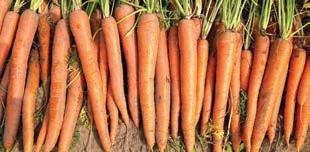







vol. 32, no. 1









vol. 32, no. 1
6 Rietveld
Road Trip
8 Dust in the Wind Preventing Wind Erosion
12 Crop
Buyers’ Guide

The Rietveld Farm Stand opens mid-July and runs for about three months. Future plans include a greenhouse, which will allow the family to open the stand earlier in the year and possibly expand into flowers. Take a road trip to page 6 to see more.
Shanna Bernal-Fields with USDA Natural Resources Conservation Service shows the soil layers in this Blackfoot, Idaho, field that has transitioned from loamysand to sandy-loam to rootresistant duripan (hardpan) over the decades. Learn more on page 8.
PO Box 333
Roberts, Idaho 83444
Telephone: (208) 520-6461
Circulation: (503) 724-3581
CarrotCountry.com
Carrot CountrY ContaCts
editor
Denise Keller
editor@ColumbiaMediaGroup.com
publisher / advertising Manager
Dave Alexander
dave@ColumbiaMediaGroup.com
director of operations
Brian Feist
brian@ColumbiaMediaGroup.com
edItorIal InForMatIon
Carrot Country is interested in newsworthy material related to carrot production and marketing. Contributions from all segments of the industry are welcome. Submit news releases, new product submissions, stories and photos via email to: editor@ColumbiaMediaGroup.com, or call (509) 697-9436.
advertIsInG sales
For information on rates, mechanics, deadlines, list rental, direct mail, inserts or other information, call (208) 520-6461 or email: dave@carrotcountry.net
suBsCrIptIons
U.S. $20 per year
Canada $30 per year
Foreign $45 per year
subscribe online at: www.CarrotCountry.com/subscribe or call (503) 724-3581
Email address changes/corrections to brian@ColumbiaMediaGroup.com or mail to:
Carrot Country PO Box 333 Roberts, ID 83444
Carrot Country magazine (ISSN 1071-6653), is published four times a year and mailed under a standard rate mailing permit at Idaho Falls, Idaho and at additional mailing offices. produced by Columbia Media Group po Box 333, roberts, Id, 83444
Copyright 2024. all rights reserved. No part of this publication may be reproduced or transmitted in any form or by any means, electronic or mechanical, for any purpose without the express written permission of Columbia Media Group.







Managing weeds in carrots has always been a significant challenge for several reasons. First, the crop itself is a tortoise racing against weeds that are like hares. Carrots emerge very slowly and non-uniformly, particularly in cool weather, and often take several weeks to form a canopy that can compete with weeds. Secondly, control options are limited. Early-season cultivation is challenging, given that the weeds grow faster than the carrots, creating a size differential where early cultivation puts the crop at risk of “cultivator blight,” while waiting for the crop to size up to minimize that risk allows weeds to grow beyond the capabilities of tillage. Herbicide options, like in many minor crops, are limited to only a few viable tools, some of which are further restricted where groundwater contamination risk is high. Hand-weeding is excessively expensive, if labor is even available, and not a realistic long-term option across large acreages.
In most carrot producing regions, including the Upper Midwest U.S., weed control challenges are increasing exponentially with widespread selection for herbicide-resistant weeds. In the Upper Midwest, this is particularly true for Amaranthus species such as redroot pigweed and, more recently, waterhemp. Weeds resistant to the photosystem II (PSII) herbicide site of action are especially problematic, given that three of the most common herbicide active ingredients used in carrot fall in that group: linuron, metribuzin and prometryn. Waterhemp resistance to seven herbicides sites of action has now been reported globally, including multiple populations with resistance to six sites of action in individual plants. Some more recent cases include metabolic resistance, such as to the active ingredient s-metolachlor that is used in carrots, where resistant waterhemp uses generalist enzymes found in most organisms to detoxify or “digest” the herbicide and other plant stressors. While metabolic resistance sounds like something out of a sci-fi movie, it’s real and happening, and it means that these amped-up weeds can metabolize herbicides that have never been sprayed on them before – or have yet to be invented.
So what does this mean for the future of carrot weed management? By necessity, it will be different and will need to incorporate new strategies that complement or are alternatives to current herbicides. With that said, there are several “lowhanging fruit” strategies that can be adopted with minimal additional inputs or cost. Here, we outline a few of these strategies from a compilation of studies we have conducted in Wisconsin over the last several years, including a large factorial study that investigated carrot cultivar choice, row density,
seeding timing and use of plant growth regulators to stimulate canopy development.
• Go fishing. Yes, you read that correctly! By far, our best weed control across the season happened when we delayed seeding for two weeks (from late April to midMay in Wisconsin). Carrot emergence was much faster and more complete in warmer mid-May conditions than late April and, as a result, the crop canopy closed earlier and suppressed weeds. We’re not alone in this observation; similar results have been reported by Canadian researchers, and growers note anecdotally that later planted carrots have far fewer weed issues than their earlier plantings.
• Choose competitive cultivars. Carrots, like most crops, have traditionally been bred for end-use characteristics: high usable yield and good quality. Resources that plants put into below-ground growth can come at the cost of foliar growth. For example, in related research, we found that potato canopy development was much more complete in the original Russet Burbank line from 1885 compared to modern cultivars, and this impacted their ability to tolerate or suppress weeds. We’ve had similar observations in our work with carrot breeders. So, choose a variety that emerges rapidly, grows quickly and forms a complete canopy, without compromising yield and desirably with good foliar disease resistance; the results are like mulching the ground but with the carrot canopy that intercepts light, water and nutrients before they reach weeds.
• Increase the number of rows per bed. There are two benefits to this approach. First, denser plantings suppress weeds well. Second, in a system where most inputs are broadcast such as irrigation, crop protectants and fertilizer, the system is simply more efficient, where a grower can get more yield out of the same amount of land and inputs. Why pay for fertilizer, water and other inputs that weeds can use but not the crops? Just be sure to pick a carrot cultivar with good foliar disease resistance; dense plantings can become a plant pathogen humidor of sorts. And it’s acknowledged that increasing the number of seeded rows per bed requires planter and harvester equipment changes that are extremely costly, so maybe this is a consideration when it’s time for new steel in the field.
Looking forward, weed management in minor crops is on the verge of a paradigm change. There simply aren’t a lot of new herbicide sites of action or even new active ingredients
coming along. Meanwhile, great advances are being made in practical applications of remote sensing, automated robotics and alternative control tools. New automated sensing technology can detect in real-time the difference between weeds and crops with sub-millimeter accuracy. Automated robotics are becoming common in high-value minor crops where labor isn’t available. The best part: robots don’t complain and can work 24 hours a day. And finally, innovative management tools are now commercially available, such as lasers and electrocution for weed

control. Sure, there are still advances to be made and like any new technology, the first commercial products can be expensive, but keep in mind that the first cell phone introduced in 1983 weighed 2.5 pounds and cost over $10,000 in inflation-adjusted USD. These, and other innovations, will help us bridge the gaps in current conventional weed control and greatly expand options for organic producers. In the meantime, take advantage of the lowhanging fruit, and enjoy the fishing!

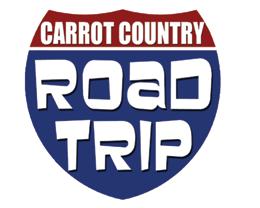
When a flight took us to the Midwest, in the vicinity of Rietveld Equipment, we took the opportunity for another road trip. A new showroom, built to display and demo the company’s post-harvest equipment, was available for touring.
We were able to see brand new machines set in place, not yet wired. But visitors will soon be able to test drive this same equipment as potatoes are washed, sorted and boxed on site.
Run by father and son John and Nick Rietveld, the company sells individual pieces of equipment, but can also design and build complete packing facilities.
The Rietveld family has grown onion sets and sweet corn for five generations on their own or rented property about 60 miles south of Chicago. Due to an ever-decreasing retail market, Canadian competition, increasing input costs and lack of labor, the Rietvelds made the tough decision in 2023 to quit growing onion sets. They continue to grow sweet corn and sell it at their own farm stand, along with salsa and other locally grown produce. Nick said people drive from up to two hours away to buy their corn and salsa, and they sell as many as 6,000 ears of corn a day.
Cutting some acreage from their farm’s day-to-day routine has opened up more time for John and Nick to spend on Rietveld Equipment. They sell, service and install top-notch machines from European manufacturers including Meconaf, Allround, Upmann, VHM, IPLA, Teneco and Intec.
Follow along with these photos for a tour of this new facility in Bourbonnais, Illinois.









If you’re growing anything, it all starts with healthy soil. Producers today recognize this, though soil health is a relatively new concept and hasn’t always been top of mind. In the 1930s, the infamous Dust Bowl swept soil across the Great Plains. Due to a combination of drought, turning native grasses into farmland (absence of cover vegetation), no windbreaks (trees) and a lack of irrigation, top soil literally blew away, creating massive dust clouds from the Plains to the East Coast.
This summer, the USDA Natural Resources Conservation Service (NRCS) hosted a soil day to help growers in Eastern Idaho better understand the benefits of good soil and curtailing wind
erosion, but the lessons learned at this seminar can be applied everywhere.
Nick Sirovatka, regional soil health specialist with USDA-NRCS, drove from Oregon to Eastern Idaho to talk about wind erosion and how to prevent it.
There are three major forms of wind erosion. From the least problematic to the worst, they are ground creep, suspension and saltation.
Ground creep happens when wind rolls fine particles on the ground. If you’re lucky, your soil won’t belong to your neighbor after ground creep.
Suspension is when wind picks up fine dust particles and keeps them in the air.
Saltation happens when soil particles get picked up and then come back down. When saltation occurs, fine soil particles are lifted and eventually strike the soil still on the ground. When the particles hit the soil surface, they can potentially “blow apart soil structure,” Sirovatka says. This creates even finer particles, leaving the soil even more susceptible to all three forms of wind erosion.
The simplest solution to combatting wind erosion is to cover the ground. But cover may not be practical or available. If cover is not available, leave the ground rough, with clods, when tilling to reduce wind erosion. These clods are known as


• Aggregation is promoted in soil by adding organic matter, and it also increases soil structure. This is especially true for sandy soil.
• Reducing the number of tillage passes and the soil disturbance intensity helps maintain organic matter in soil and boosts its life.
• Diversify rotation crops.
For a sandy, low-aggregate soil, it only takes a wind of 5 miles per hour to start moving soil, so reducing erosion should be top of mind for growers. Sirovatka suggests incorporating some of these ideas into day-to-day operations. Growers may not be able to jump away from what they are currently doing “cold turkey,” but should always be on the lookout for ways to combat wind and water erosion, thereby increasing soil health.
aggregate, which is sand, silt and clay particles bound together in the soil.
If leaving larger clods is not practical, keep in mind any aggregation will have a positive effect on wind erosion. Sirovatka says anything bigger than a kernel of wheat will help.
Shawn Nield with NRCS in Boise, Idaho, agrees that wheat kernel-size aggregate is ideal, but notes, “Even small aggregation – we’re talking about millimeter-sized aggregate – accounts
for a big decrease in the amount of predicted erosion.”
• Create windbreaks around field perimeters. Leaving strips in fields will also create windbreaks.
• Consider timing when doing tillage and before removing cover stubble. Leave stubble longer.
Shawn Nield with USDA Natural Resources Conservation Service in Boise, Idaho, tells attendees that managing irrigation water more efficiently can save a lot of money. By using technologies like soil moisture sensors, weather apps and low-elevation sprinklers, growers can cut into the average cost of $13,000 in electricity to run one pivot for one season.

 Nick Sirovatka with USDA Natural Resources Conservation Service demonstrates wind erosion with a visual experiment. Using a leaf blower to simulate wind erosion, he created a mini Dust Bowl that perfectly demonstrated how topsoil is lost due to wind.
Tasha Paul with USDA Natural Resources Conservation Service stands in a pit, dug just outside the work zone in a field. One foot of soil loss was observed in the tilled versus nontilled areas of this field.
Nick Sirovatka with USDA Natural Resources Conservation Service demonstrates wind erosion with a visual experiment. Using a leaf blower to simulate wind erosion, he created a mini Dust Bowl that perfectly demonstrated how topsoil is lost due to wind.
Tasha Paul with USDA Natural Resources Conservation Service stands in a pit, dug just outside the work zone in a field. One foot of soil loss was observed in the tilled versus nontilled areas of this field.
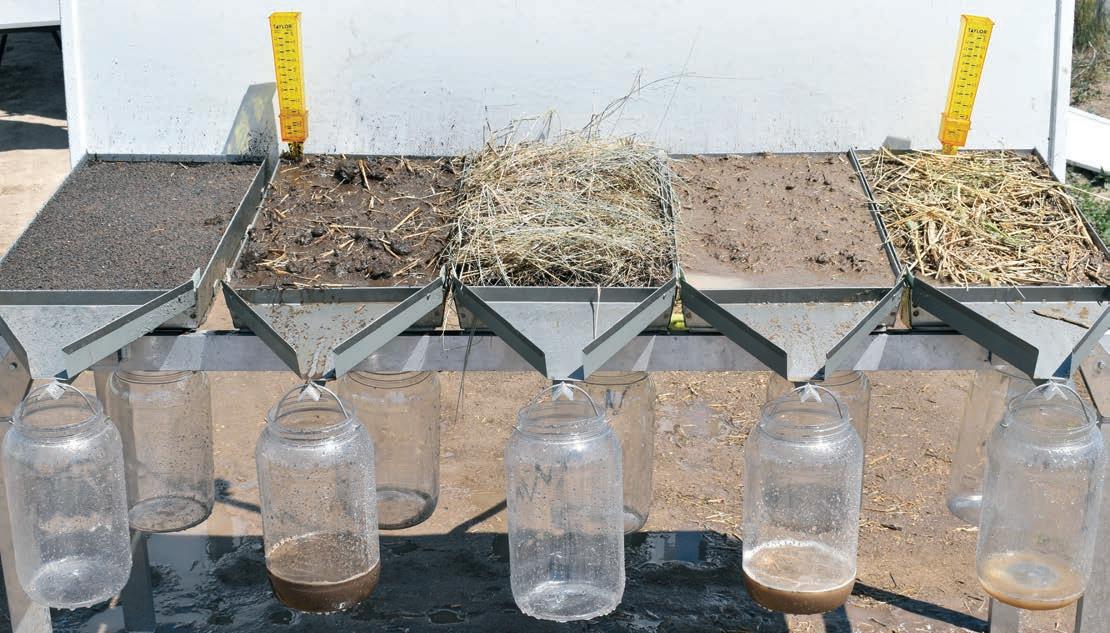
This demonstration shows how different soils hold the same amount of water, in this case 0.75 inch of simulated rain. The worked/tilled soil (second from left) could not hold as much water as the non-worked and covered examples. Residue eliminates hard, initial droplet contact and slows down rain movement, letting it soak in rather than running off.
24-03 Carrot Country .5 Page.v1.pdf
1 2024-02-07 11:02 am


Jen Doxey has joined Fox Packaging as the company’s new director of sales. She is responsible for overseeing the sales operations of Fox Packaging and Fox Solutions and collaborating with the team in developing sales and service strategies that further the Fox brand.
Doxey brings over 20 years of experience in the produce industry, with an emphasis on developing and executing strategic sales plans, building long-term customer relationships and leading high-performing teams. She comes to Fox from Giro Pack, where she served as the national sales manager for nearly eight years.

Redox Bio-Nutrients is celebrating its 30th anniversary this year. The company provides carbon-based nutrition products with biostimulant properties to agricultural producers across the U.S. and internationally. The company aims to help growers succeed in four primary areas: soil health, root development, abiotic stress defense and nutrient efficiency.
According to Redox, the field of bio-nutrition is gaining broad acceptance, and new breakthroughs in scientific research indicate a bright future for progressive growers. The company points to quantifiable benefits from bio-stimulants, including improved size and firmness for multiple crops, as well as dramatic nitrogen efficiency gains while maintaining strong crop yield.













Salibro
corteva.us/salibronematicide
Salibro nematicide with Reklemel active received U.S. EPA registration in 2023. For carrots, it offers quick and effective protection from root-knot nematodes without disrupting the healthy balance of beneficial organisms in the soil.
As the first sulfonamide nematicide, Salibro will provide a new mode of action for effective resistance management. Reklemel active, discovered and developed by Corteva, is a non-fumigant. It received a “reduced risk” designation from the U.S. Environmental Protection Agency Office of Pesticides Program. The signal word is “caution”.
Salibro offers a more favorable environmental profile than certain other nematode control products used in carrots. It has exceptionally high compatibility with soil health, including beneficial nematodes, beneficial soil fungi and soil bacteria.
cropvitality.com/kts
KTS, by Crop Vitality, will provide the boost growers need for a larger, more uniform carrot harvest. KTS, a liquid potassium thiosulfate fertilizer, supplies soluble potassium and sulfur to support root growth, transport of water, and nutrient uptake in the plant. Foliar applications allow direct access to these nutrients when plants demand it most. A Washington field trial showed that where 1 gallon/acre of KTS was applied twice as a foliar, yield increased by 3.2 tons per acre over the check.

jhbiotech.com/chelation-and-mineral-nutrition

Biomin is a line of fully chelated plant nutrients resulting from the chelation of mineral nutrients with amino acids. These chelates protect the nutrient from combining with other elements or losing nutrient value for absorption. JH Biotech’s Biomin chelated line is OMRI, CDFA and WSDA organic certified and is compatible with humic and fulvic acid products. Without using harsh chemicals, it provides plants with stable nutrients, balancing mineral deficiencies more quickly than conventional inorganic nutrients. It can be used for soil and foliar applications without compromising environmental quality and safety. Biomin may be applied to all crops and turf. It reduces the effects of saline soils, water deficiency and weather conditions while encouraging increased yield, homogeneous ripening, more flavored and high quality fruit, and greater nutrient absorption.
Lorox
novasource.com
Combat and manage annual weeds with Lorox, a Group 7 herbicide. A necessary tool to complete an IPM program, Lorox helps suppress problematic weeds that inhibit growth and yield of a carrot crop. The active ingredient linuron targets over 20 broadleaf weeds and grasses, making it useful across the U.S. Leveraging a different mode of action, Lorox breaks the cycle of herbicide-resistant weeds.

omexusa.com
Omex Cell Power Calcium Gold contains unique technology that directs the plant to use calcium in a different way. It allows lower rates of calcium to be applied while producing a greater and more consistent effect. Omex EBA stress-reducing technology contains a molecule that allows carrots to take up calcium and metabolize it right at the sink, usually the root. EBA technology works by stimulating absorption of calcium into tissues that conventional fertilizers cannot penetrate. Omex is pioneering calcium technology that supports a plant’s natural processes to enable calcium absorption when a plant’s natural system is unable.


rangonow.com
Combat pests such as mites and mildew and ensure a thriving carrot crop with Rango, a triple-action biopesticide with multiple modes of action, including insect growth regulation, anti-feedant properties, molting disruption and repellency. Rango is an ideal tank-mix and rotation partner for resistance management. A zero-day pre-harvest interval, a four-hour reentry and application flexibility make Rango a go-to choice for effective pest management. What sets Rango apart is its versatility, offering comprehensive disease, insect and mite control in one jug. It’s a proven solution for fungal diseases and managing both sucking and chewing insects across various lifecycle stages. Rango is EPA registered and OMRI approved and is formulated in the U.S.


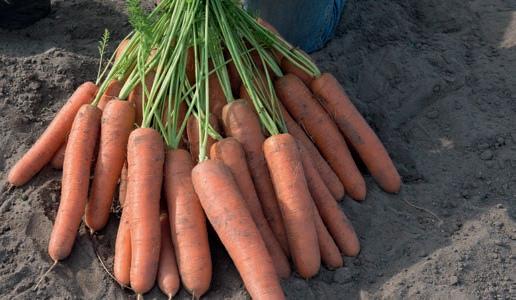




NAPOLI
Very full-sized Nantes with strong dark green tops and cylindrical, smooth blunt roots. A specialized variety with a sweet taste when sown in fall for winter harvest.
Resistance IR: Ar / Cc / Ps, Pv
YAYA
Similar to Nelson, with more uniform roots and plant vigor. The 5 1/2–6 1/2” roots have mild flavor and crisp, juicy texture with early sugar development. Strong, compact tops for bunching.
Resistance IR: Ar / Cc / Ps, Pv
Chelsey Lenczyk - Organic Lead, Home & Farm Market Manager
T: 267-838-0078 E: c.lenczyk@bejoseeds.com


NAVAL
A Nantes type that produces very shapely, uniform, hairless roots 7-9 inches long. Crisp and sweet, Naval resists cracking with an added bonus of a long shelf life.
Resistance IR: Ad / Ar / Cc
bejoseeds.com



ACCURATE:
Precisely orients and sorts carrots by size
GENTLE:
Separates without damaging carrots
FAST:
Thirteen standard models custom-designed to meet your needs sort from 1000 lb/hr to 30,000 lb/hr
SIMPLE:
Effective but simple design provides a rugged, low cost, low maintenance machine at a high value to our customers. It can even be used in the field!

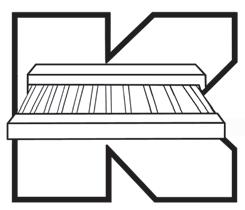
Rivulis and Dragon-Line have formed an exclusive distribution agreement in the U.S., Mexico and Canada. With this partnership, Dragon-Line is launching a new Dragon-Line Mobile Drip Irrigation System based on a newly developed Rivulis drip line product for this application. The system enables the transition of center pivots from sprinkler systems to mobile drip irrigation. This saves water, energy and labor while also improving soil and plant health, according to the companies.
Visit www.dragonline.net.
Key Technology has rolled out its new Compass optical sorter suitable for processing lines handling food products including carrots. Powered by next-generation inspection technology and a new sort engine, the machine is designed to accurately separate foreign material from the line, in addition to sorting the specific product defects each processor wants to manage.
Compass is offered in a configurable range of system types and sizes to meet individual customer requirements. Key is first introducing chute-fed Compass models, to be followed by belt-fed variants of the sorter.
Visit www.key.net.




